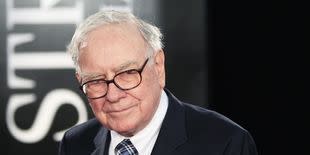Billion dollar Soros bet right on the money

In what must be one of the greatest currency bets on the Australian dollar, George Soros is rumoured to have gambled around $1 billion dollars on a Reserve Bank rate cut sending the local currency lower.
If the rumours are to be believed, the 82-year-old investment legend pocketed a cool $18.5 million from the play.
Making the story even better, it appears Soros pulled off the bet three times with three different foreign exchange brokers in Asia, therefore tripling his profits to around $60 million.
It looks as though Soros knew something local economists didn’t, with all 13 economists surveyed by AAP prior to the RBA’s decision predicting that rates would stay on hold.
Pretty good work for a man, who just three weeks ago, was incorrectly declared dead by news agency Reuters.
The accidentally published obituary recapped Soros' years as an investor and financier, and detailed his massive wealth, which is estimated to be $19 billion in total.
How Soros did it
Gossip started swirling around markets on Monday evening that the US billionaire had taken a $1 billion short position against the Australian dollar.
A short position is effectively a bet on the price of an asset falling, you do this by borrowing the asset off its owner at its current value and agreeing to return it at a designated point in the future.
The short investor then sells the asset and, if the price does fall, he or she can buy it back more cheaply to return it to the owner, making a profit.
However, if the price rises, then the short investor loses money because they have to pay more to buy back the asset to return it than what they sold it for.
Soros looks to have made his play when the Australian Dollar was trading at around $US1.03 on spot markets. Over the next couple of days, and thanks to the RBA cutting interest rates, the Aussie declined and is currently trading at around $1.01 mark.
Currency Converter
Commonwealth Bank’s chief currency strategist, Richard Grace, said that most people who have tried to short the Australian dollar in the past few years have gotten burnt.
History of pulling off these kind of trades
Mr Soros famously shorted the British pound in 1992, earning around US$1.8 billion profit for his fund. It’s commonly known as the day Soros ‘broke’ the Bank of England.
Soros has also been accused of helping to trigger the Asian financial crisis in 1997 by short-selling the Thai Baht and the Malaysian Ringgit.

More from Yahoo!7 Finance
The crowdfunding revolution
Play the market like Tiger plays golf
The downside of our success

 Yahoo Finance
Yahoo Finance 